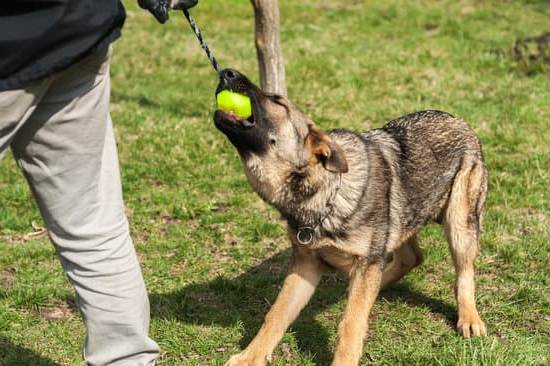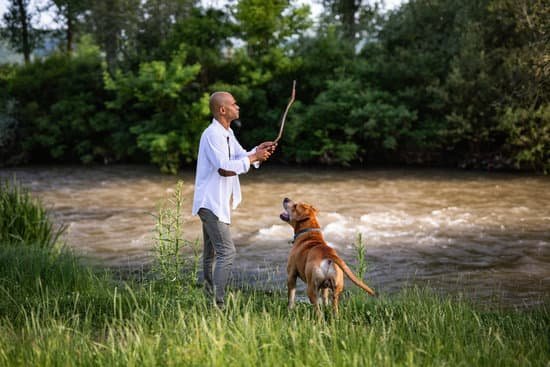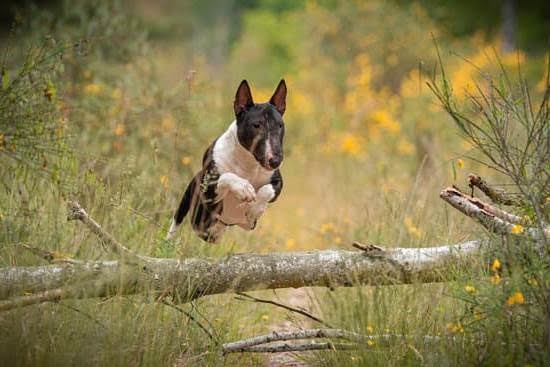Are you looking for an effective way to train your dog? Look no further than the use of a dog training clicker. The clicker has become a popular tool among dog trainers and pet owners alike for its effectiveness in shaping behavior through positive reinforcement. In this article, we will explore the basics of using a clicker for dog training, its benefits, how to choose the right clicker for your dog, and techniques for incorporating clicker training into your routine.
Using a dog training clicker can be a game-changer when it comes to teaching your furry friend new behaviors and commands. By providing a distinct sound that marks the desired behavior at the precise moment it occurs, the clicker effectively communicates to your dog what they did right. This clear and consistent communication helps speed up the learning process and strengthen the bond between you and your pet.
In this comprehensive guide, we will delve into the various aspects of using a clicker for training purposes. From understanding its benefits to troubleshooting common issues that may arise during training sessions, we’ll cover it all. Whether you’re a novice or seasoned trainer, incorporating clicker training into your daily routine can lead to remarkable results in your dog’s behavior and obedience.
Benefits of Using a Clicker for Dog Training
When it comes to training your dog, using a dog training clicker can have numerous benefits. This tool has become increasingly popular among pet owners and trainers due to its effectiveness in communication and reinforcement during training sessions.
Clear Communication
One of the key benefits of using a dog training clicker is that it provides clear and consistent communication with your dog. The sound of the clicker serves as a precise marker for the exact moment your dog exhibits the desired behavior. This clarity helps your dog understand exactly what they are being rewarded for, making the training process more efficient and effective.
Positive Reinforcement
Clicker training is based on the principles of positive reinforcement, which involves rewarding your dog for good behavior rather than punishing them for undesirable actions. The clicker allows you to instantly mark the behavior you want to encourage, followed by a reward such as treats or praise. This positive association makes learning more enjoyable for your dog and strengthens the bond between you.
Enhanced Focus and Motivation
Using a clicker during training can help increase your dog’s focus and motivation. The distinct sound of the clicker captures their attention and signals that a reward is coming, which encourages them to stay engaged and eager to learn. This heightened focus can be especially beneficial when teaching complex commands or behaviors that require precise timing and consistency.
Incorporating a dog training clicker into your training routine can offer these valuable benefits, ultimately making the learning process more enjoyable and successful for both you and your furry companion.
Choosing the Right Clicker for Your Dog
When it comes to choosing the right clicker for your dog, there are a few key factors to consider. The first and most important consideration is the sound of the clicker. It’s essential that the clicker produces a distinct and consistent sound that your dog can easily associate with positive reinforcement. Some dogs may be more sensitive to loud noises, so you’ll want to test different clickers to find one that is not too startling for your pet.
Another factor to consider when choosing a clicker for your dog is its size and ease of use. You’ll want a clicker that fits comfortably in your hand and is easy to operate, especially if you’re also holding a leash or using other training tools. There are different types of clickers available, including traditional box clickers, button clickers, and even wearable clickers that can be worn on your finger like a ring.
It’s also important to consider the durability of the clicker, especially if you have an active or mouthy dog. Look for a clicker that is well-made and able to withstand some wear and tear. Additionally, some clickers come with additional features such as a wrist strap or built-in whistle, which may be helpful depending on your specific training needs.
Ultimately, the right clicker for your dog will depend on their individual personality and your own preferences as a trainer. It may take some trial and error to find the perfect fit, but once you do, you’ll have a valuable tool for effective communication and positive reinforcement in your training sessions.
How to Introduce the Clicker to Your Dog
Introducing the clicker to your dog is a crucial step in clicker training. It is important to ensure that your dog understands the purpose of the clicker and its association with positive reinforcement.
To begin, it’s essential to familiarize your dog with the clicker by using a simple conditioning method. The first step is to associate the sound of the clicker with a reward. Every time you click the device, immediately follow it up with a treat for your dog. This helps them understand that the clicking sound indicates a reward is coming.
Once your dog has made the association between the clicker and receiving a treat, you can start incorporating it into basic training exercises. Begin by using the clicker during simple commands such as sit or stay. Click when your dog follows through with the command and then reward them immediately. Consistency and timing are key in this process, so make sure to use the clicker at the exact moment your dog performs the desired behavior.
As you continue to use the clicker during training sessions, your dog will become more accustomed to its purpose and will learn to anticipate positive reinforcement when they hear the clicking sound. With patience and practice, introducing the clicker to your dog can be a highly effective tool in their training routine.
By taking these steps, you can successfully introduce and incorporate a dog training clicker into their daily routine. With consistency and positive reinforcement, using a clicker can greatly improve communication between you and your furry friend while making training sessions more enjoyable for both parties involved.
Basic Clicker Training Commands and Techniques
When it comes to basic clicker training commands and techniques, consistency is key. Here are some essential commands and techniques to start with when using a dog training clicker:
1. Targeting: This command involves teaching your dog to touch a specific object with their nose or paw. To begin, simply present the target object and click when your dog interacts with it, followed by a treat. Repeat this process until your dog consistently touches the target.
2. Sit: One of the most basic obedience commands, teaching your dog to sit using a clicker involves luring them into the sitting position with a treat, clicking as soon as their bottom touches the ground, and then rewarding them.
3. Stay: With the use of a clicker, you can reinforce the “stay” command by clicking when your dog remains in place, gradually increasing the duration before you click and reward them.
4. Recall: Getting your dog to come when called is crucial for their safety. Use the clicker to reinforce this behavior by clicking when they respond to their name or a recall command, followed by a tasty treat.
By incorporating these basic commands and techniques into your clicker training routine, you can establish a strong foundation for more advanced behaviors down the line.
Remember that patience is key when using a dog training clicker – always set realistic expectations for your pet and celebrate small victories along the way.
Advanced Clicker Training
Shaping and targeting are advanced techniques that can be incorporated into clicker training to teach your dog more complex behaviors. This involves breaking down the desired behavior into smaller steps and using the clicker to mark each small step of progress. Shaping allows you to gradually shape your dog’s behavior by reinforcing small movements or actions that eventually lead to the desired behavior.
To start shaping a new behavior, first, identify the end goal behavior you want your dog to perform. Then, break down that behavior into smaller achievable steps. For example, if you want to teach your dog to fetch an item and drop it in a designated area, you can start by shaping the behavior of picking up the item, then carrying it, then dropping it on cue.
Once you have identified the smaller steps, you can use the clicker to mark and reinforce each step as your dog performs it. By breaking down the behavior into manageable parts and using positive reinforcement with the clicker, your dog will learn the complex behavior more effectively. It’s important to be patient and consistent when shaping a new behavior with your dog training clicker.
When using targeting in clicker training, you are teaching your dog to touch a specific object with a part of their body such as their nose or paw. This technique is useful for getting your dog to interact with objects or follow specific cues. For example, if you want your dog to turn off lights by touching a switch with their nose, targeting can help you achieve this skill through gradual shaping and positive reinforcement.
Troubleshooting Common Issues in Clicker Training
Clicker Not Producing the Desired Response
If you find that your dog is not responding to the clicker as expected, it may be due to a few different factors. First, ensure that the clicker is making a clear and consistent sound. Sometimes, clickers can malfunction or lose their effectiveness over time. Additionally, make sure that you are clicking at the exact moment your dog performs the desired behavior. Timing is crucial in clicker training, so practicing your timing with the clicker is essential for success.
Over-Excitement or Fear of the Clicker
Some dogs may become overly excited or fearful of the sound of the clicker. If your dog becomes too excitable, it’s important to work on calming exercises and gradually reintroduce the clicker in a controlled manner. For dogs who are afraid of the clicker sound, start by desensitizing them to it by clicking from a distance and gradually getting closer as they become more comfortable.
Inconsistency in Clicking
Inconsistency in using the clicker can lead to confusion for your dog. It’s important for everyone involved in training to use the clicker consistently and with proper timing. Set clear guidelines for when and how often the clicker should be used during training sessions. This will help prevent any confusion for your dog and ensure that they understand exactly what behaviors are being reinforced.
By troubleshooting these common issues in clicker training, you can ensure that both you and your dog have a positive and successful experience with this effective training method. Remember to be patient and consistent as you work through any challenges that may arise during the training process.
Incorporating Clicker Training Into Your Dog’s Daily Routine
One of the key advantages of incorporating clicker training into your dog’s daily routine is the clarity and precision it provides in communication. The distinct sound of the clicker serves as an immediate marker for the desired behavior, making it easier for your dog to understand what they are being rewarded for. This can lead to faster and more effective learning, ultimately resulting in a better-behaved pet.
Furthermore, integrating clicker training into your dog’s daily activities helps create a structured and consistent training regimen. Whether it’s practicing basic obedience commands during walks or incorporating clicker sessions into playtime, establishing a routine that includes clicker training can help reinforce good behavior throughout various aspects of your dog’s life. By doing so, you’ll not only see improvements in their behavior but also enjoy a more harmonious relationship with your canine companion.
Overall, by incorporating clicker training into your dog’s daily routine, you can effectively enhance their learning experience, strengthen the bond between you and your pet, and set them up for success in their training endeavors. With dedication and consistency, utilizing a dog training clicker as part of their daily activities can lead to a well-behaved and happier furry friend.
Frequently Asked Questions
Is Using a Clicker Good for Dog Training?
Using a clicker for dog training can be highly effective. The sound of the click provides clear feedback to the dog, marking the exact behavior that is being rewarded. It helps to communicate with the dog and reinforce positive behaviors.
Is Clicker Training Good for Service Dogs?
Clicker training can be very beneficial for service dogs. It allows for precise communication and reinforcement of desired behaviors, which is essential for service dogs to perform their tasks reliably. It can help shape complex behaviors through incremental steps.
How Do You Clicker Train a Dog for Beginners?
To start clicker training a dog, it’s important to first associate the clicking sound with rewards through a process called “charging the clicker.” Once the dog understands this association, you can begin using the clicker to mark and reinforce specific behaviors, gradually shaping them into desired actions.
Consistency and patience are key when starting out with clicker training for beginners.

Welcome to the blog! I am a professional dog trainer and have been working with dogs for many years. In this blog, I will be discussing various topics related to dog training, including tips, tricks, and advice. I hope you find this information helpful and informative. Thanks for reading!





